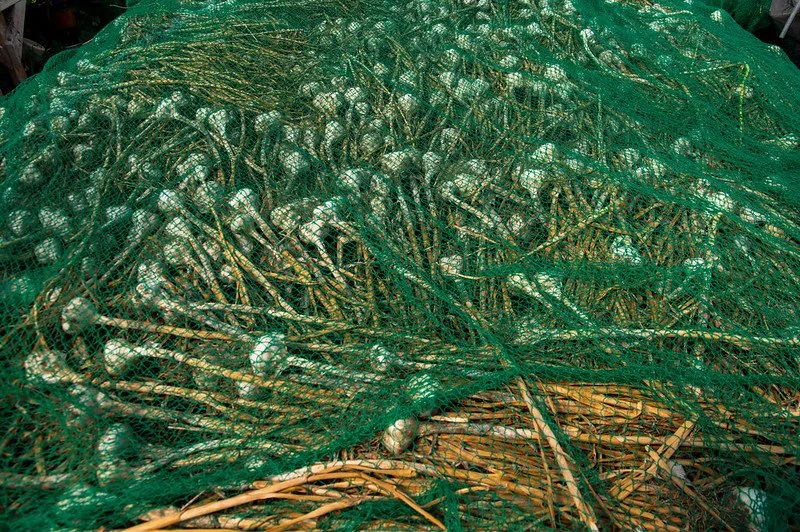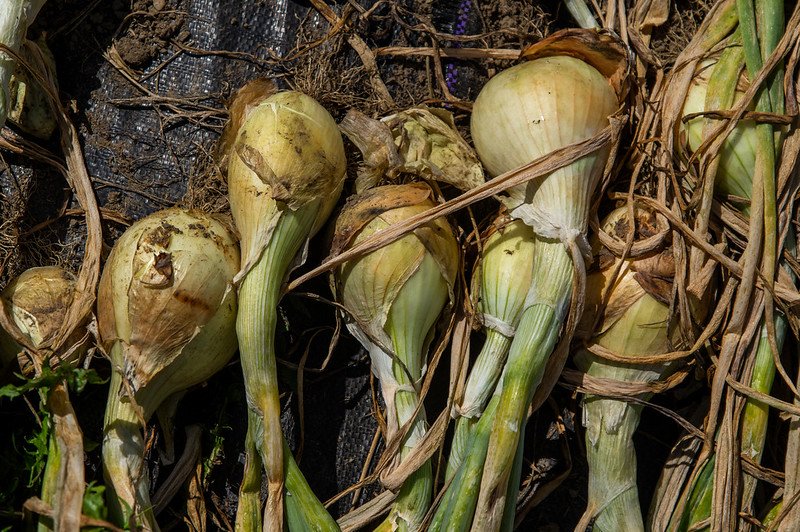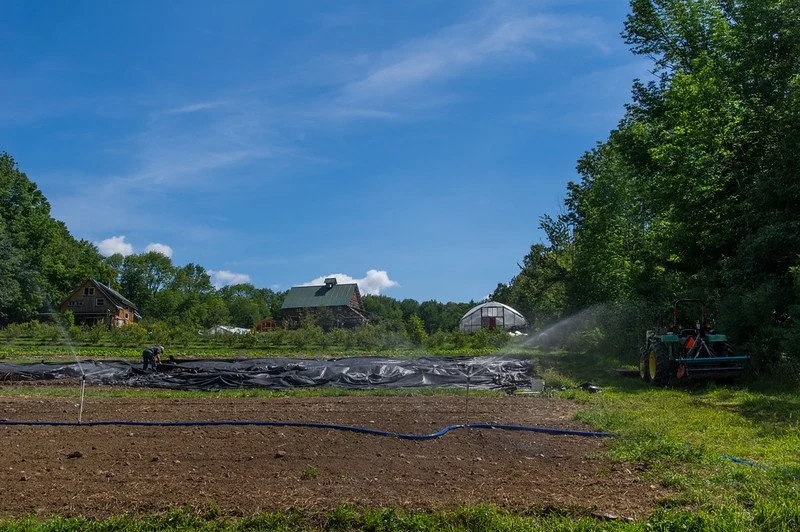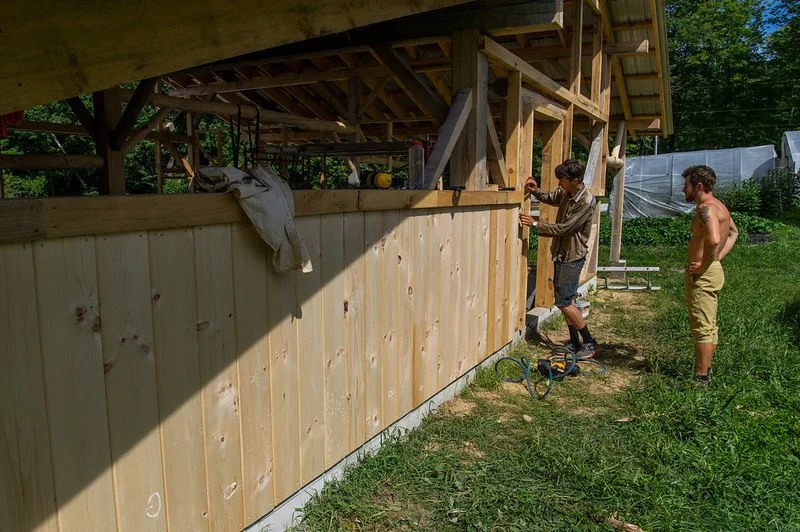12th Week of the Summer CSA season: Week of August 23rd
CSA Balance Due
If you haven’t already paid, your balance is due. You can pay online through your account, mail a check to Evening Song Farm 48 Nice Road, Cuttingsville VT 05738, or leave a check in the CSA cash box at the barn. It’s very cool to pay in smaller chunks, just let us know what your payment plan is. You can also email or call us to pay with EBT.
If you get an email reminder that CSA payment is due: make that payment, let us know when you will be able to, or let us know if the amount due seems wrong. It adds a lot of extra computer time to try to repeatedly follow up with folks individually, so this is a simple way to lighten our administrative work. (Some of the auto emails have been a little funky, so we are happy to answer those questions if you get a weird one.) Thank you!
Sunflower, photo by Adam Ford
This Week’s Availability
This week we will have heirloom tomatoes, beefsteak tomatoes, paste tomatoes, grape tomatoes, cherry tomatoes, husk cherries, elderberries, fresh shallot bunches, sweet onions, celery, fennel, garlic scapes, purple kohlrabi, basil, parsley, cilantro, green cabbage, baby lettuce, spinach, arugula, pea shoots, green curly kale bunches, lacinato kale bunches, zucchini, summer squash, garlic bulbs, jalapenos, new potatoes, and spaghetti squash.
Ordering closes at noon on Tuesdays for Wednesday bags, and at midnight on Wednesdays for Friday bags.
You do not need to fill out the form if you plan to come to the barn on Tuesdays, Wednesdays or Thursdays to pick out your items yourself.
If you have any trouble using the online to order your veggies this week (or change your pickup location, or skip this week, or anything…) reach out to us. It’s easy to help.
The high tunnel cucumbers have officially petered out, though if we’re lucky we may have some September cucumbers maturing outside. Photo by Adam Ford
Up close with a celery plant. Photo by Adam Ford
The garlic drying in the propagation house gets a little shade from our bird netting, photo by Adam Ford
Spaghetti squash, photo by Adam Ford
Molly’s artwork is always so cool. Photo by Adam Ford
These trays are growing many of the greens—kale, chard, lettuce, parsley—that will overwinter in our high tunnels for harvest in December through April. Photo by Adam Ford
Farm News from Ryan
This week we seeded many trays in our greenhouse with lettuce, scallions, and cilantro, which will be transplanted into the tunnels in September. These germinating seeds join the kale, chard, and parsley that has already been seeded for winter harvest. So much of what we do on a vegetable farm involves thinking many months ahead. It’s hard to believe that we will be harvesting from these plants all the way into next April!
Another exciting happening on the farm was the planting of 3,000 strawberry runner tips in our greenhouse. One way that strawberry plants propagate themselves is by growing runners…long stems off of the mother plant that have a tiny strawberry plant at the end of the stem. That little strawberry plant is supported by water and nutrient flow from the roots of the mother plant through the stem that connects them. But when the baby plant comes in contact with the soil, it quickly sends out roots so that it can develop it’s own root system to survive independently of that connection. The runner tips that we purchase have been cut from the mother plant, so after we pot them into trays, they go on a bench in our propagation house that has special misting nozzles above it. Every five minutes, the seedlings receive 5 seconds of mist, which keeps their leaves moist during the vulnerable period when the young plant is sending roots into the soil. Without any roots to transport water to the leaves, if the leaves were to get dry on a sunny day, the plant would quickly wilt and die like a lettuce leaf in the sun. So for these first two weeks after planting, we closely watch them to make sure the leaves are moist while the plants, like magic, send roots through the rich potting media, readying themselves for mid-September transplanting in one of our outdoor fields. There they will grow through October before slowing down and toughening up, withstanding the bitter cold of winter before the leaves grow in April, the flowers bloom in May, and the berries ripen relentlessly all through June.
As far as the fruit that is ripening this time of the year, this week brings the first harvest of husk cherries as well as elderberries. Elderberries are a unique fruit, not so much for fresh eating but good to use in baking or to make elderberry syrup—this week’s recipe is for elderberry rosemary scones. (You can pick summer savory from the pick-you-own flower garden by the barn, and use that instead of rosemary if you want to maximize what comes from the farm in the recipe.) Also, if you make your own elderberry syrup for the winter, and want to buy a bulk amount, either send us an email, or find them on the store to purchase at wholesale prices. The husk cherries are fun and definitely worth trying if you’ve never had them—just peel off the little paper and eat the fruit on the inside. Their flavor is really unique…I think they taste like a cross between a grape and a pineapple. They will be available for several weeks into the fall.
This coming week we’re excited to take our family on vacation and the team will hold down the farm! Taking a step away helps me feel especially grateful for all the layers of interconnection that help make this little farm possible…our farm team, the CSA members who entrust us with growing the food that nourishes their families, and the wild mystery of life that makes it all possible. But especially a big should out to the Evening Song Farm Team who are so adept at running the show in our absence. THANK YOU!
Wishing you all a beautiful week,
ESF Team: Ryan, Kara, Molly, Taylor, K2, Galen, Vanessa, Katie, Cindy, Miguel, Jake, Regan, (and Sky, and Soraya)
Elderberries are such a beautiful and robust plant, photo by Adam Ford
The cover crop in the foreground is improving the soil for next year’s planting in this field. Photo by Adam Ford
Hive C, photo by Adam Ford
Harvested onions, photo by Adam Ford
A freshly seeded cover crop gets some irrigation to help the seeds germinate, photo by Adam Ford
heavily pruned cherry tomato plants, photo by Adam Ford
The hoses that supply water to our sprinklers require a lot of repairs, photo by Adam Ford
our kids eat a box or two of these in a sitting, photo by Adam Ford
Vanessa trimming garlic for CSA, photo by Adam Ford
Molly loading up CSA tomatoes, photo by Adam Ford.
Many thanks to Terry Martin and crew for framing and roofing our new building, photo by Adam Ford
Calendula is such a sweet flower, photo by Adam Ford
Lettuce seedlings emerging through the soil, photo by Adam Ford
Checking out a detail on the siding. Jake and Cindy will have our building sided soon! photo by Adam Ford





















